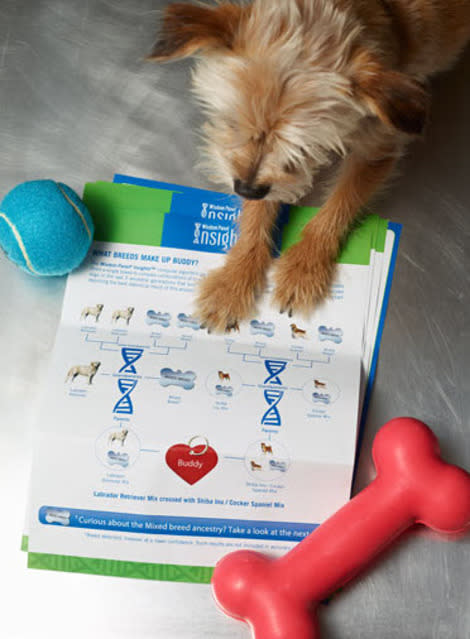4 Reasons to Take Your Dog to Work This Friday

How does this sound: You get another annoying email from your boss, but instead of biting your tongue or downing doughnuts, you're instantly comforted by Mr. Biscuit's knowing look and wagging tail next to your desk. Sounds pretty great, right? Make it happen and bring your pooch to work this Friday for a fun end to the week! Remind your boss that June 22nd is the 13th annual Take Your Dog To Work Day® and ask if your furry friend can make an office visit for the day. Or, take advantage of Take Your Pet To Work Week™ this week and secure another day to bring a pet to the office. This day was created by Pet Sitters International as a way to promote adoptions and encourage people to support their local pet community.
Letting employees bring their dogs to work is a growing trend--with companies like Google and Amazon in on it--that benefits workers and employers alike. Here's why you should sit up, take notice, and (sorry, we had to…) beg to do the same.
What Your Dog's Breed Says About You
You'll be more calm and better able to carry on. A new study from Virginia Commonwealth University looked at employees of a North Carolina company that has allowed dogs at the office for more than 15 years. Employees were divided into three groups: people who brought their dogs to work, dog owners who were asked to leave the pooches home for a week, and people with no pets. The results? Workers who'd brought their dogs to work had the lowest levels of stress, while those who'd had to leave their four-legged pals at home had the highest.
You'll get some productivity-boosting exercise. Not only can dogs reduce stress levels, says lead study author Randolph Barker, PhD, a professor at the Virginia Commonwealth University School of Business, but they can also add some exercise to the day for everyone. He found that other employees go out of their way to find coworkers with dogs and ask to take them for walks.
10 New Ways to Exercise With Your Pet
You'll take fewer sick days. "Companies that allow dogs report lower absenteeism and higher retention rates--I call it the 'furry handcuffs,' " says Jennifer Fearing, California state director for the Humane Society of the United States and coauthor of the book, Dogs at Work: A Practical Guide to Creating Dog-Friendly Workplaces.
You'll like your human coworkers more. Past studies have shown that dogs in the workplace can build trust among employees and also boost collaboration.
7 More Reasons Pets Help Your Health
Ready to make Puddles your cubicle mate? You'll need a little more finesse than just asking HR to allow dogs, says Fearing. Here's how to go about it:
Arm yourselfwith studies like this one. Show your employer the health and morale benefits of pets in the office (Fearing's book is filled with references). "Every CEO is interested in the bottom line," she says. "This study is one of several out there that shows bringing a dog to work is good for the employer, too."
Form a committee. Once you get the go-ahead from management, find coworkers who love the idea of having dogs at work, those who don't really care, and a few who are completely opposed. All the differing perspectives will help you come up with a set of rules--like designating dog-free zones for people who are allergic--that take into account the interests and concerns of everyone, Fearing says.
3 Rules of Petiquette
Offer a two-week trial run. Routine is very important for keeping dogs calm and quiet, says Fearing. Bringing a pet to work for just one day can get the whole experiment off to a bad start--one that bosses won't want to repeat--so go with a two-week test to give Floyd the Frise more time to settle in.
TELL US: Is your office pet-friendly?
--Emily Main, Prevention
More from Prevention.com:
The Ultimate Guide to Summer Safety for Your Pet
Surprising Pet Toxins Lurking in Your Home
7 Ways to Pet-Proof Your Outdoor Spaces
